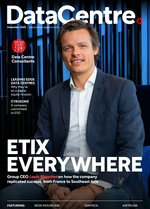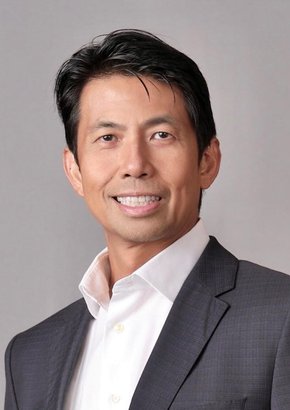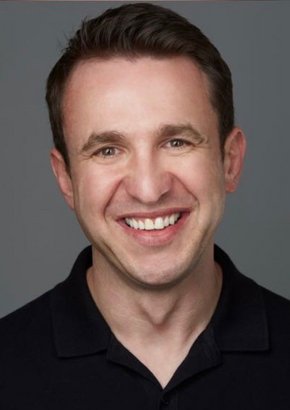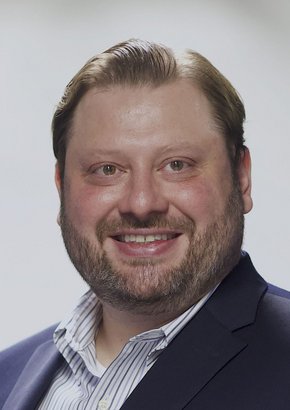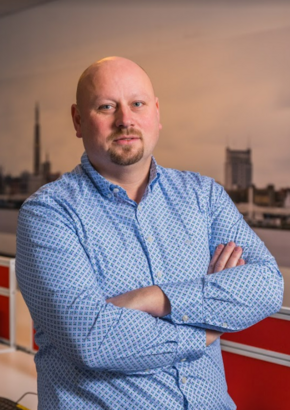
My Truong
My Truong has had a varied career, generally working at the intersection of infrastructure
and computers at the likes of Uber, Molex, Packet and now Equinix. More recently, Truong has been leading the Open19 V2 working groups and specification process and has focused his energies on sustainability challenges and opportunities. Humbled to be taking over the
leadership position in the Sustainable and Scalable Infrastructure Alliance (SSIA) — formerly the Linux Foundation's Open19 Project — at what he calls “such a critical time”, Truong sits down with Data Centre Magazine’s Editor Maya Derrick about what lies ahead for both Equinix and the SSIA.
How important is the rebrand of SSIA from Open19 as you move forward in a pursuit of circular and renewable IT, as well as for the growth of the SSIA community?
Rebrand doesn’t really capture the motivation for changing the name. As we spent time with the community developing the Open19 V2 spec, more and more anecdotal evidence emerged as we spoke with the team. The revelation that Open19 was just the start of the journey to evolve the thinking around sustainability, circularity and the path towards net zero. SSIA captures the real direction and thinking we wanted to embrace. Reduce is equally important as reuse and recycle.
What does this change mean for what possibilities lie ahead?
The sustainability space in infrastructure has so many opportunities for impact. The Open19 form-factor allows us to decouple true infrastructure deployment from the IT asset with a clear demarcation boundary. The real interesting pieces appear when we think about the full system.
The decoupling of the infrastructure from the IT asset allows us to think about more innovation on the infrastructure side. An example of this is the new NEC Class-4 Fault Managed Power Systems (FMPS) specification released this year. Introducing a high-voltage, touch-safe power delivery system becomes very interesting when power supply units are not tied to the server.
The software and infrastructure insights, especially in the open source community, leaves a lot to be desired. Asking a simple question ‘What is my operational carbon footprint?’ inevitably leads to follow on questions around Scope 1/2/3 emissions, which explodes. It becomes really interesting when we think about reporting this data. Power grid production mix will rapidly change this data.
There’s also some pragmatic topics to touch on. With the introduction of liquid cooling in the V2 spec, it’s important to have infrastructure blueprints that ease the deployment of the technology. Building consumable energy models to assist the adoption of sustainable solutions that can be used in conjunction with TCO models ties the technology with the business drivers.
How do you personally plan to continue to grow SSIA?
Awareness of a forum or industry group focused on the intersection of sustainability and infrastructure is the challenge. Businesses are very adept at these types of engagements and finding the right communities to engage in. If I had a single group SSIA absolutely needs engagement from it is the local and state governments in which our infrastructure operates. Data centres and infrastructure are part of the community they operate in and often an impenetrable web. Sustainability has a social component, especially where the infrastructure decisions meet the local community.
What challenges do you expect to come across? And how do you plan to navigate that?
Greenwashing is a real issue in the industry, where attaching a theoretical benefit without data becomes problematic. Data is the great equaliser– showing the data to support a climate neutral or net zero outcome can help clarify the positive impacts of a marketing push.
What do the next 12 months hold for you at Equinix and as Chairman of SSIA?
We have a lot of work to do over the next 12 months. Expanding the membership, selecting from the proposed working topics and forming the working groups is going to be critical. The real challenge is going to be adoption from the industry of our work. Any change today in the physical infrastructure takes three to five years to appear and will continue to run for another five to 20 years!
Featured Interviews
“Our ESG and DE&I programs are pivotal to ensuring that we not only strive to deliver excellence in data centre development and operations, but we also provide a welcoming and thriving work environment for our people along with developing strong connections with the communities in which we operate.”

